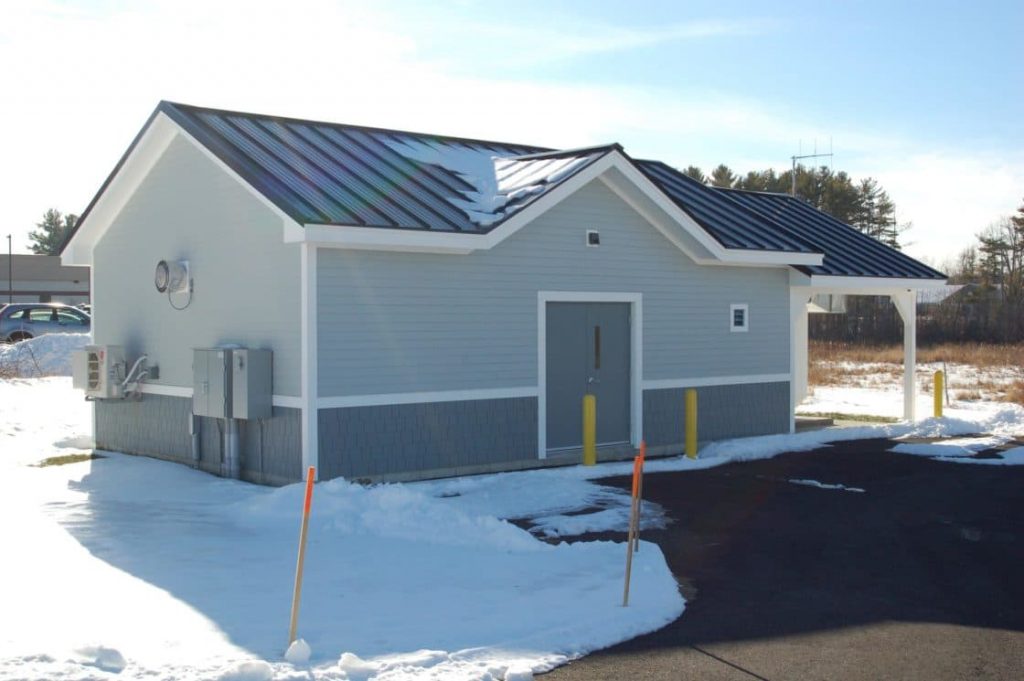
Tata & Howard assisted Maine Water Company with mechanical, structural, and architectural design of a new high service zone booster pump station on Barra Road within the Biddeford-Saco water distribution system. The new pump station replaced the existing Alfred Road station, providing pumping capacity to meet current demands in a majority of the City of Biddeford as well as room for future expansion. Funding for the project was provided in part by the Maine Drinking Water Program State Revolving Fund (DWSRF).
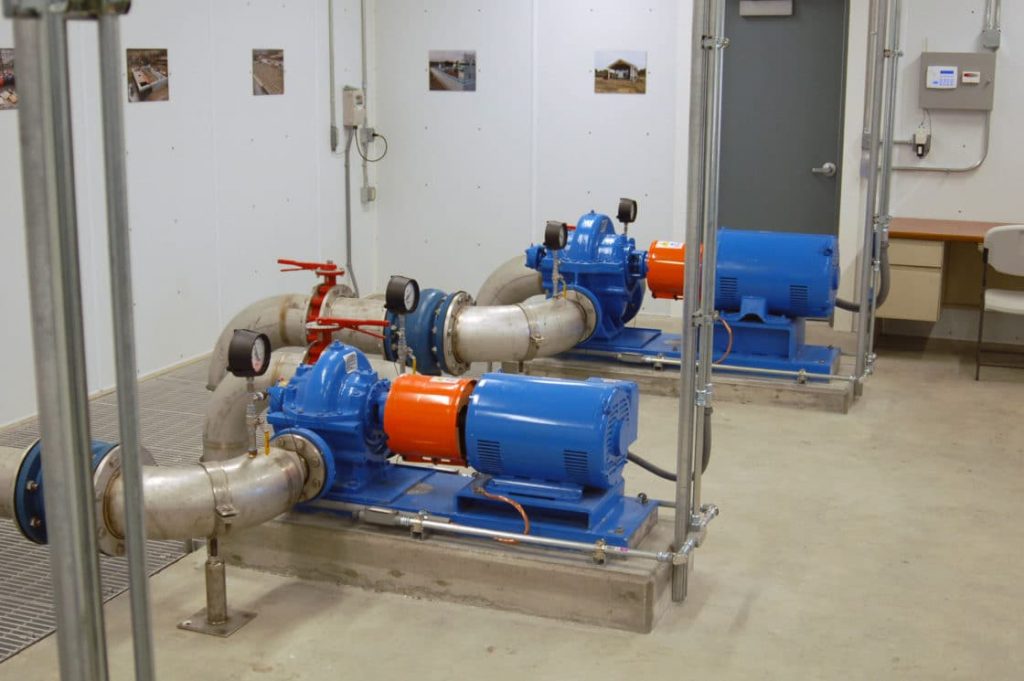
Mechanical design for the project consisted of sizing and selection of three (3) centrifugal booster pumps, associated piping, and appurtenances. The pumps were sized with input from a hydraulic model of the system developed by Tata & Howard, and they were selected to maximize the available flow from a 16” cast iron pipe line that crosses the Maine Turnpike from the water system’s major storage reservoir. A pipe gallery was incorporated into the slab and foundation design as well as insulated concrete form (ICF) foundation walls. Per the Owner’s request, the architectural design used colors and materials similar to the other buildings within the surrounding commercial office park. Also, a gable roof canopy was added to the design (pictured below) to help shield the emergency backup generator from the elements. Precautions were taken to ensure proper air flow and ventilation was achieved to meet the requirements of the generator. Construction of the pump station was completed in 2015.
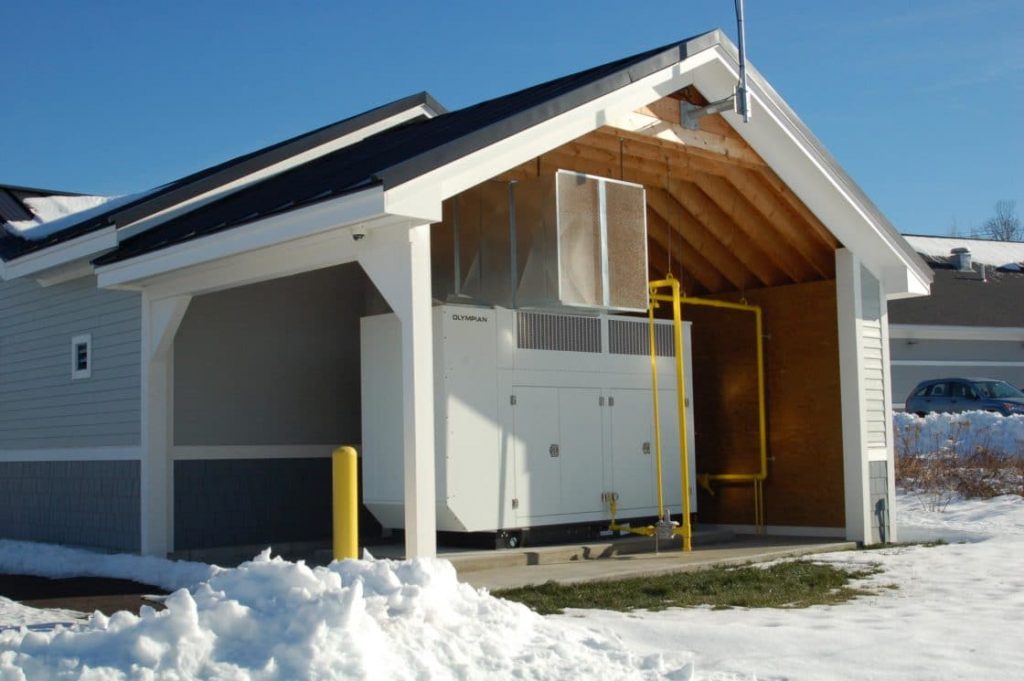
CLIENT: City of Worcester, Massachusetts
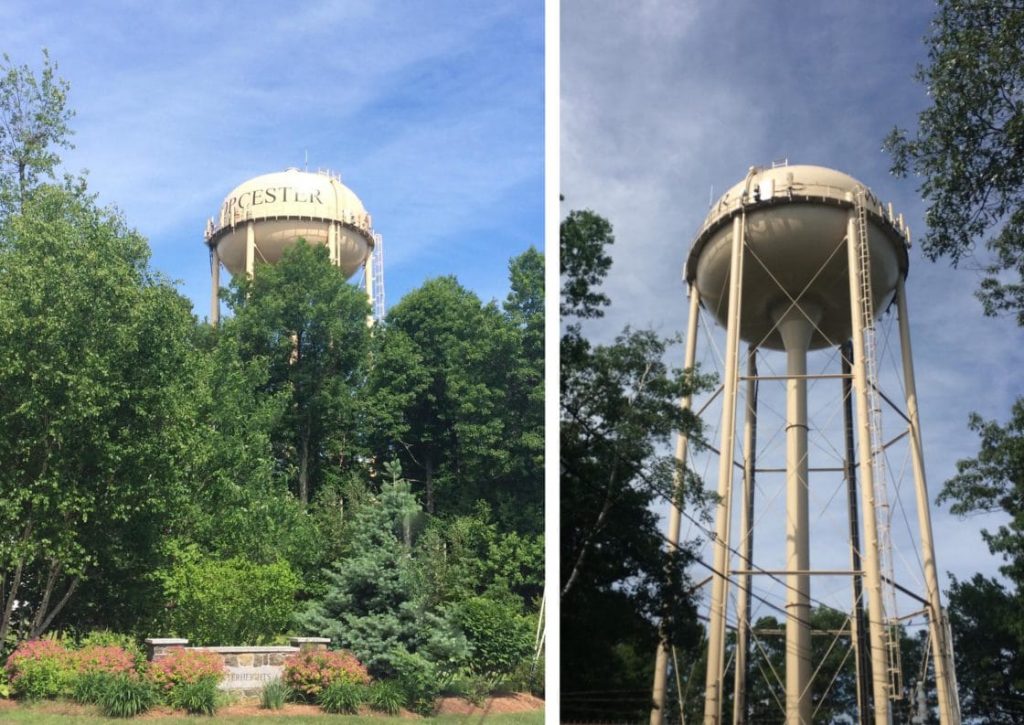
PROJECT: Chester Street 0.5 million gallon water storage tank painting, cleaning, and rehabilitation
THE CHALLENGE: The Chester Street water storage tank required evaluation, repair, cleaning, and painting of both the interior and the exterior. The tank is located in a heavily populated residential neighborhood and the exterior surface had high levels of lead in the paint. Therefore, special attention to lead contamination, noise, and construction debris was required. In addition, determination of the effects of taking the tank offline were required before any work could be started.
THE SOLUTION: Analysis of the Super High Service Area using the verified hydraulic model was conducted, and the model was run under extended period simulation (EPS) to evaluate the potential pressure problems within the service area. As a result, operational modifications to the existing pump stations and service zones were recommended. Working only during daylight hours while keeping noise and debris to a bare minimum, construction crews completed miscellaneous repairs including replacing the anchor bolts, installation of overflow support brackets, modification of the access ladder, modification of the roof ladder, repair of the upper level sway rod, extension of the balcony handrail, installation of a roof handrail, and replacement of the roof finial vent. During the exterior abrasive cleaning, a containment system was utilized to prevent lead from getting into the air and soil. Once all repairs and cleaning were completed, the interior and exterior of the elevated tank were painted.
PROGRESS: Two years later, the tank is still in pristine condition, as shown in the photo above.

Tata & Howard provided engineering services and completed numerous studies for the South Central Regional Water Authority (SCCRWA) headquartered in New Haven, Connecticut, serving 17 Cities and Towns and serving a population of over 400,000 people. Phase 1 of the New Haven Service Area Improvements Study was completed in 2009. The purpose of the study was to determine the lowest cost set of recommended capital and operational improvements to incorporate additional service areas into the New Haven Service Area. Our services included evaluating potential improvements to the distribution system to meet SCCRWA’s pressure, tank fluctuation, and fire flow criteria, and recommending a conceptual baseline solution, which was optimized during Phase 2 of the study. Phase 3, which completed the study, included a Preliminary Design Report with our final recommendations.
A 50-Year Population and Water Use Study was completed for SCCRWA in 2009. The study examined trends in water use and population growth in each of the towns and service areas served by SCCRWA and projected future water use for average day, maximum day, and maximum month demand throughout the distribution system. The projections were completed in accordance with guidelines from the Connecticut Department of Public Health and were involved in SCCRWA’s 2009 water supply plan.
In 2008, SCCRWA purchased a water distribution system with approximately 125 miles of water mains and customers located in Ansonia, Derby and Seymour, Connecticut. Tata & Howard was contracted to complete a Capital Efficiency Plan™ of the new system. Our services included updating and verifying the existing hydraulic model, evaluating the condition of the existing distribution system infrastructure to determine the adequacy of meeting present and future demands, calculating needed storage requirements, assess and prioritizing system improvements, reviewing and evaluating typical fire flows throughout the system, creating a pipe asset management rating system, and recommending improvements to the distribution system. Following the success of this effort, Tata & Howard completed Capital Efficiency Plans for the
remainder of the distribution system in 2011 and 2012.
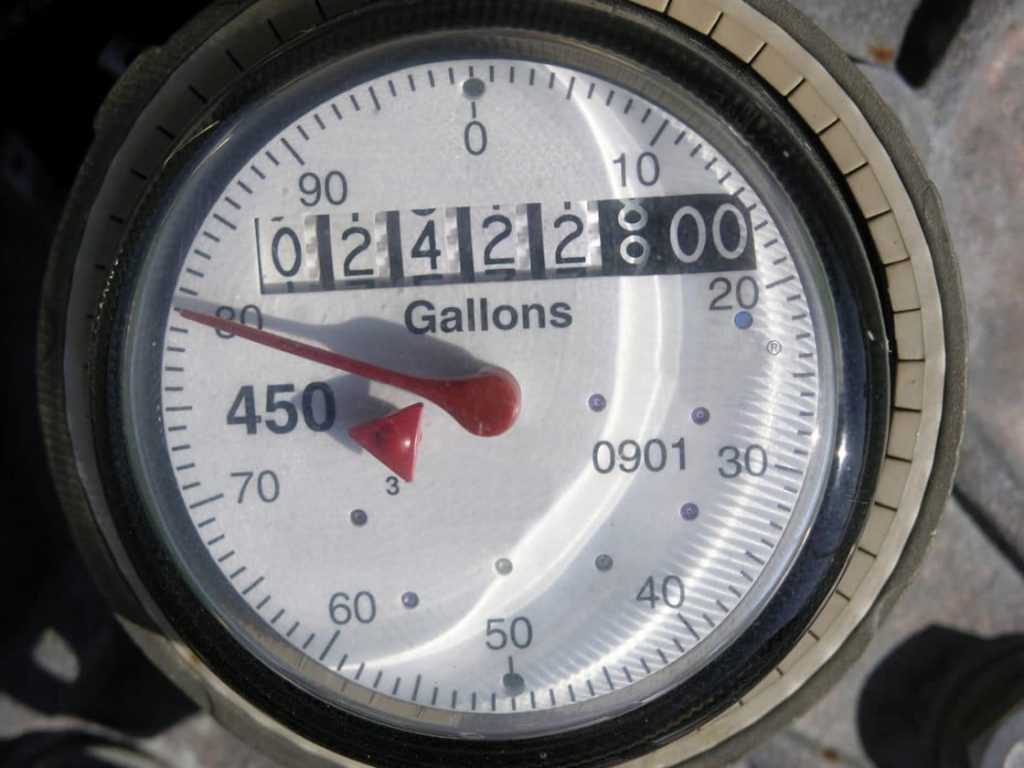
A water audit was conducted according to the guidelines outlined by the American Water Works Association (AWWA) in Water Audits and Loss Control Programs, Manual of Water Supply Practices – M36, Third Edition. The data reviewed and analyzed included the volume pumped for each source, source meter errors/calibration, the volume of water imported/exported, billed and unbilled consumption, recorded leakage, main breaks, and unauthorized consumption.
Key performance indicators, including Infrastructure Leakage Index (ILI) and non-revenue water, were evaluated to track management of the water utility. Based on the results of the audit, recommendations were made to improve system operation and reduce non-revenue water. Although the RWA’s non-revenue water water rate was around 15%, the audit confirmed that the RWA’s Infrastructure Leakage Index or ILI was at industry best practice levels, confirming that apparent losses made up the majority of RWA’s water loss.
The recommendations in the audit report included verification of flows at ten production meters, where serious over-reporting of flow was identified. As a result of this work, two of the production meters were replaced in 2013, including a 54-inch diameter venturi tube at the RWA’s main source. The audit report also confirmed statistical analysis of customer meter testing that led to a decision to focus meter replacement work on piston-type meters while leaving older but more statistically accurate nutating disc-type meters in service for longer periods.
Advanced condition assessment of cast iron water main samples and water infrastructure provides insight into the quality and reliability of a water distribution system. The goal is to be able to efficiently and effectively run the water distribution system by allocating capital to areas of the system that are in need of rehabilitation or replacement. Tata & Howard is a leader in condition assessment methods for water distribution system pipe assets.
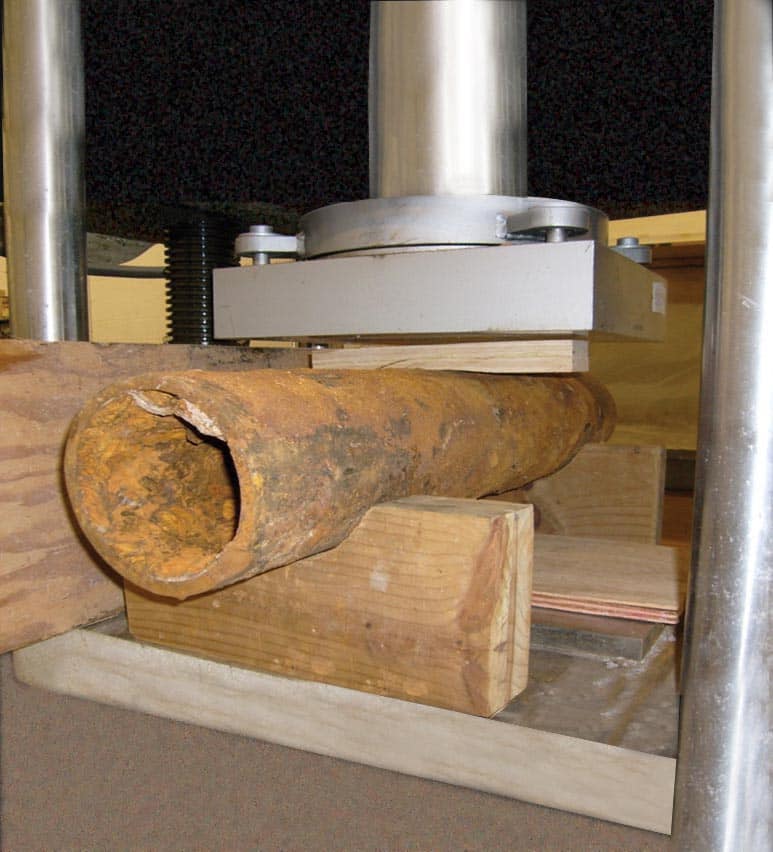
In 2007, Tata & Howard began extracting one foot long cast iron water main samples ranging in diameter from 6 to 12 inches as part of a cleaning and cement lining water main rehabilitation project. Since then, we have evaluated a significant number of cast iron water main samples for several water distribution systems throughout Massachusetts and Connecticut, typically during a rehabilitation project, water main failure, or water main replacement project.
Sections are evaluated using several criteria:
- Pipe Class Estimation Based on Remaining Wall Thickness
- Visual Inspection
- Pipe Crushing ANSI A21.6-13 Yields Break Load of Sample
Samples are loaded, one at a time, onto a machine that monitors the application of load in pounds, and the load required to cause the main to break is then recorded. Additional visual inspections are also made and recorded.
- Remaining Factor of Safety Estimation
In the past, cast iron pipe manufacturers incorporated a 2.5 minimum factor of safety (FOS) to the crushing load necessary to break a water main. The manufacturer’s FOS can be compared to the crushing load that was measured at the materials testing facility, which then yields the estimated remaining FOS of the water main sample.
Condition assessment is beneficial in assisting a utility in the decision to rehabilitate a water main or schedule it for replacement, and in identifying asset classes that are candidates for replacement. The visual inspection provides an assessment of the quality of the water main, which assists in properly allocating capital funds to mains that are on the verge of failure or in need of rehabilitation.
Whitepaper:
Pipe condition assessment combined with break data for New England communities allows for continued analysis of problem pipes in distribution systems. This whitepaper outlines the research completed and the data collected to help pinpoint the next problematic pipe cohort. Read the complete whitepaper here.







